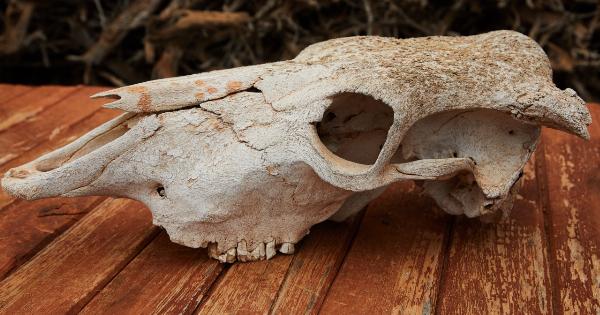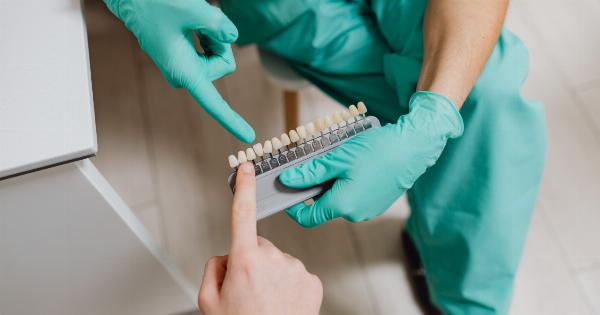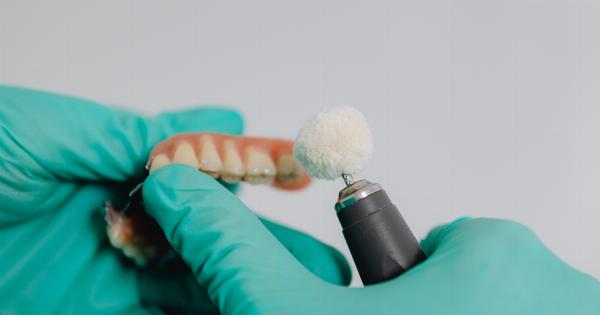A broken tooth can be a painful and stressful situation. It can be caused by various reasons, such as trauma, decay, or inherited conditions.
If you have a broken tooth, it is important to understand the possible causes and the available restoration techniques. In this article, we will discuss the reasons for a broken tooth, the symptoms, and the different restoration techniques.
Reasons for a Broken Tooth
There are several reasons why a tooth may break. These include:.
Trauma
A tooth can become broken due to trauma, such as a fall, an accident, or a sports injury. Trauma can also cause a tooth to become loose or completely dislodged from the gum.
Decay
A tooth that is weakened by decay can fracture or break under pressure. Decay weakens the tooth structure and makes it more prone to damage.
Inherited Conditions
Inherited conditions such as amelogenesis imperfecta or dentinogenesis imperfecta can cause teeth to be weaker and more susceptible to breakage.
Thin Enamel
Some people have naturally thin enamel, which can make teeth more likely to crack or chip.
Symptoms of a Broken Tooth
The symptoms of a broken tooth can vary depending on the severity and location of the break. Some common symptoms include:.
Pain
A broken tooth can be painful, especially when exposed to hot or cold temperatures or pressure.
Sensitivity
A broken tooth can make the tooth more sensitive to hot or cold temperatures or air.
Visible Damage
A broken tooth may be visibly chipped, cracked, or broken.
Sharp Edges
If a tooth is broken, it may have sharp edges that can cut the tongue or cheeks.
Difficulty Chewing
A broken tooth can make it difficult to chew, especially if the damage affects the biting surface.
Restoration Techniques for Broken Teeth
The treatment for a broken tooth depends on the severity and location of the damage. The following are some of the common restoration techniques for broken teeth:.
Dental Bonding
Dental bonding is a cosmetic procedure that involves applying a resin material to the damaged tooth. The material is then shaped and hardened using a special light. Dental bonding is a quick and painless way to repair chipped or cracked teeth.
Dental Crowns
A dental crown is a tooth-shaped cap that is placed over a damaged tooth. The crown is used to restore the shape, size, and strength of the tooth. Crowns can be made from a variety of materials, including porcelain, metal, or a combination of both.
Dental Veneers
Dental veneers are thin shells that are placed over the front surface of a tooth. Veneers are used to improve the appearance of chipped, cracked, or stained teeth.
Tooth Extraction
If the damage to the tooth is severe, the tooth may need to be extracted. Tooth extraction is usually a last resort and is only done when other restoration techniques are not possible.
Root Canal
If the damage reaches the pulp of the tooth, a root canal may be needed to remove the damaged tissue. A root canal is a procedure that removes the infected or damaged pulp and replaces it with a filling.
Dental Implants
If a tooth is completely lost or extracted, a dental implant may be needed. A dental implant is a metal post that is inserted into the jawbone. The post serves as a foundation for a replacement tooth.
Conclusion
A broken tooth can be a painful and stressful situation, but there are many restoration techniques available to help fix the problem. If you have a broken tooth, it is important to see a dentist as soon as possible to prevent further damage.
Depending on the severity and location of the damage, your dentist may recommend dental bonding, dental crowns, dental veneers, tooth extraction, root canal, or dental implants.



























